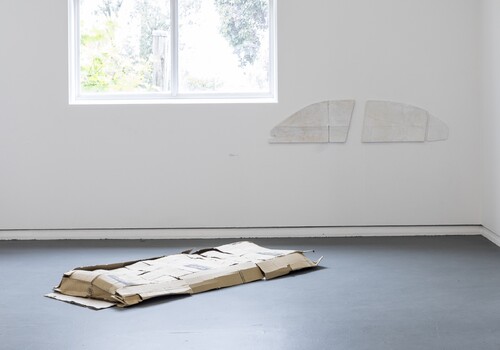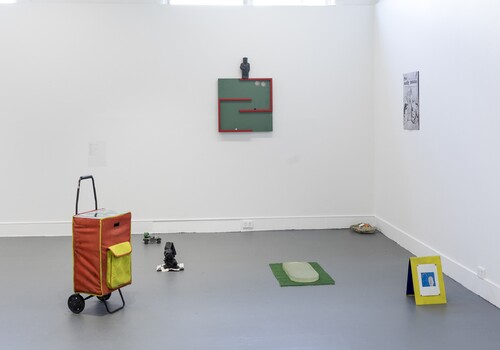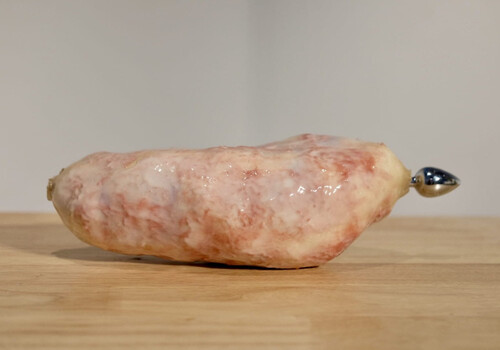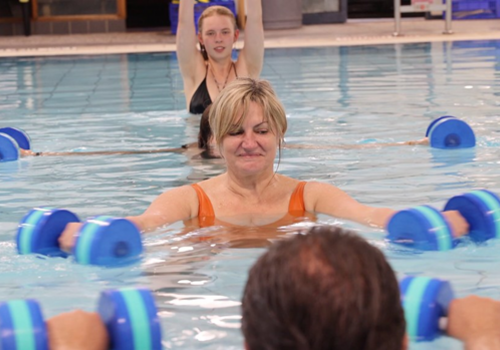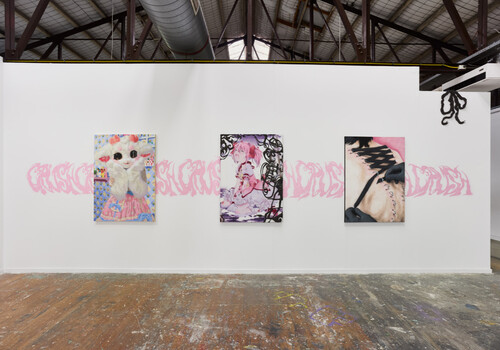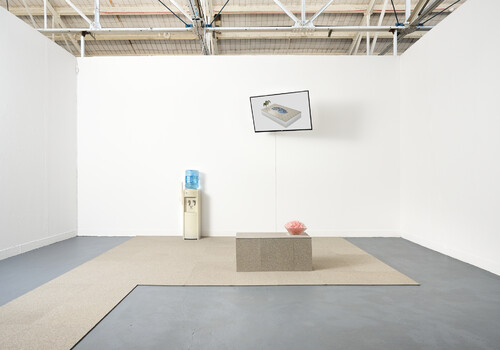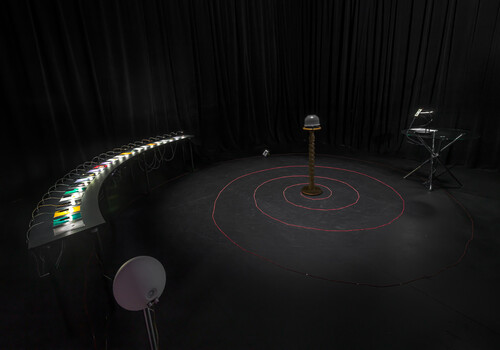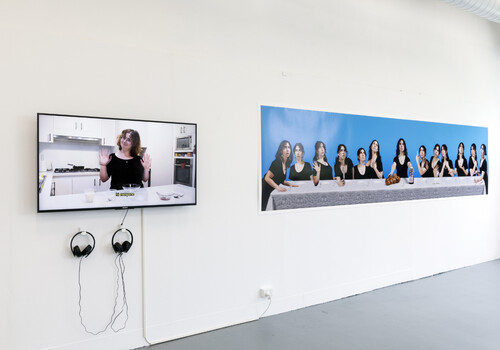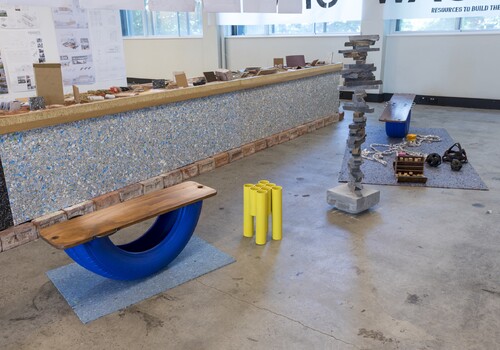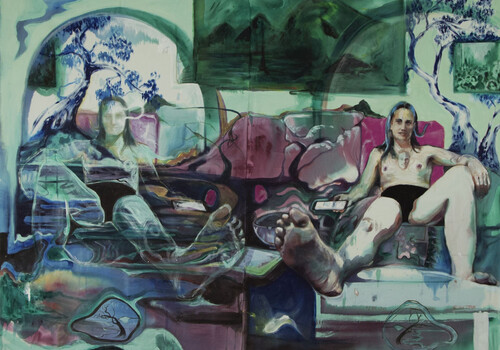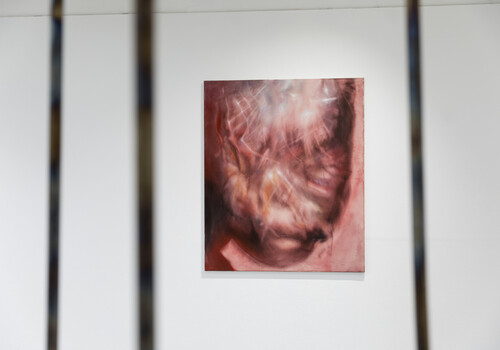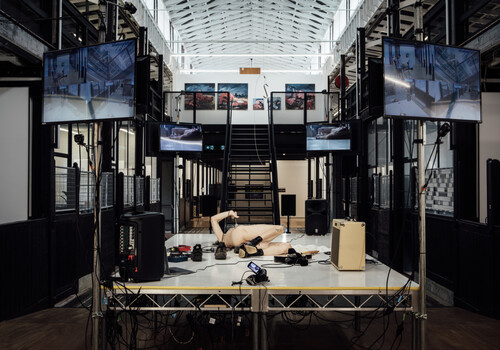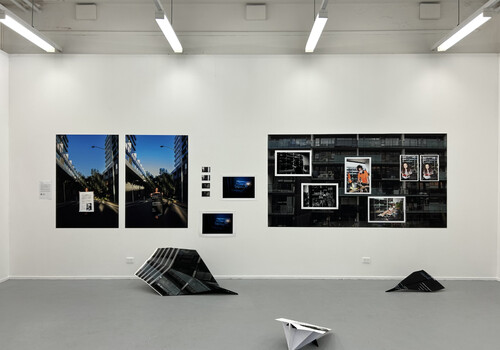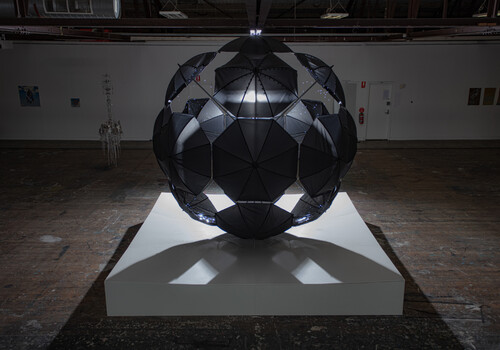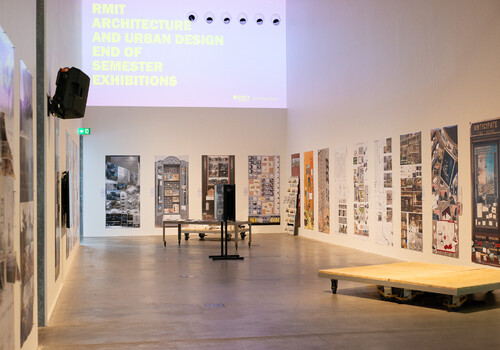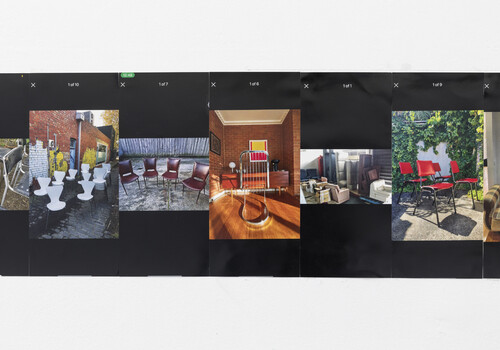Painting, Victorian College of the Arts
By Tarquin Charlesworth
Australians live by the “go big or go home” mantra: The Big Banana, The Big Prawn, The Big Potato, The Big (little) Hotel. For Tomas Ording-Jespersen, it’s all about the Big Dutch Biscuits. In an exhibition of muted palettes and high-tech installations, why not return to the mainstay of Antipodean cultural output: Bigness. In the same way that the “Big Things” phenomenon functions to inspire motorists to break their roadtrips, Ording-Jespersen’s Spekulatius (2023) convinced me to hit the stop button on the VCA grad show conveyor belt.
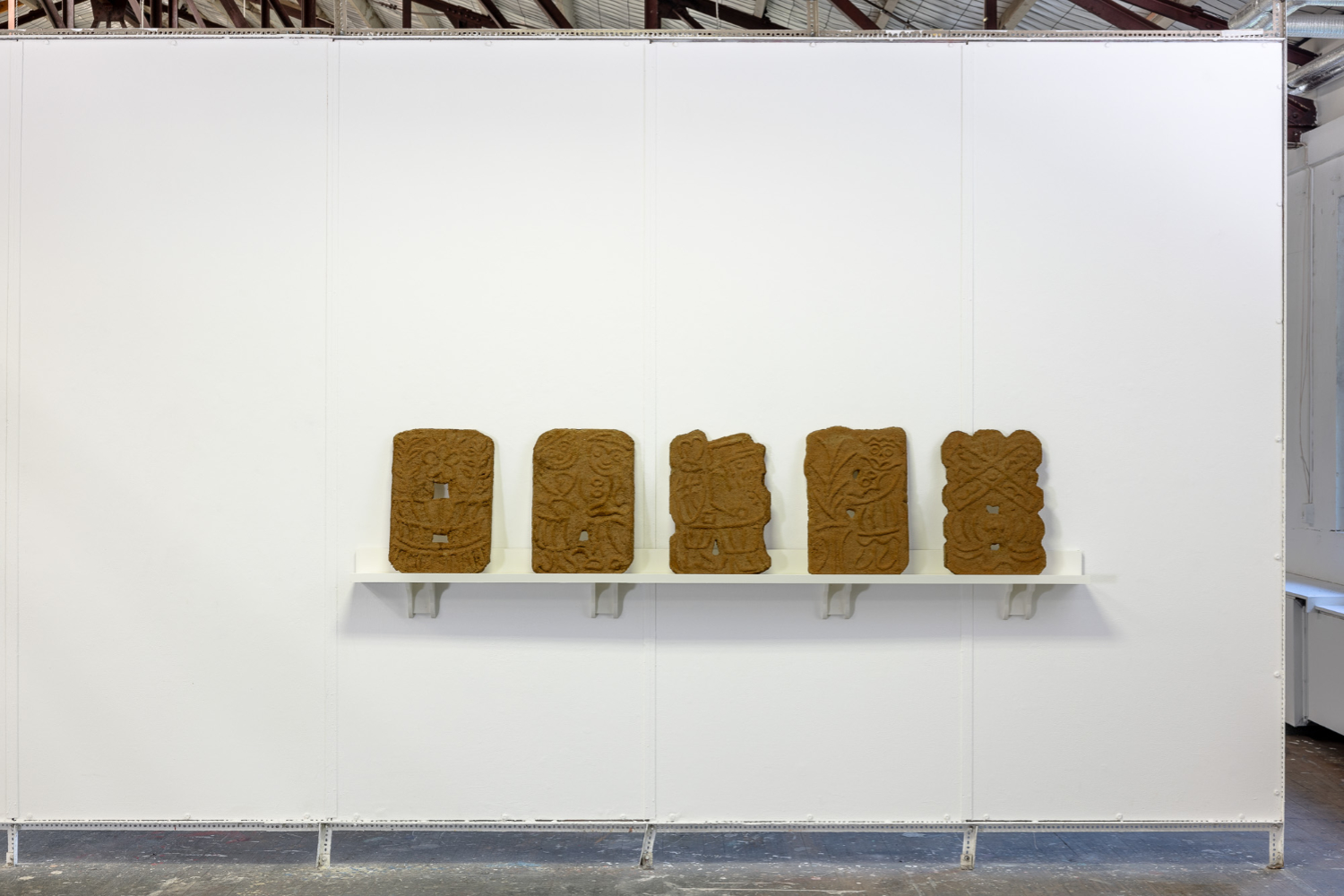
Ording-Jespersen’s enlarged speculoos sit on a shelf, leaning on the wall behind them. The styrofoam forms are coated in carved clay and dressed in a fragrant mixture of spices. The biscuits at this size become tomes; runes that beg for speculation (speculoo-tion, sorry.) When reading these tablets, outlines of windmills, faces and flora begin to create comic panels. Light partially streams onto Spekulatius through a window that is occluded by Gothic Charade (2023)–a diptych of cutouts, backgrounded by a netted grid of green lace. Silhouettes of a family of bears, posing for a portrait. This imitation of speculoos biscuits in addition to the folktale imagery of the family of bears, gives one a sense that Ording-Jespersen is circling around the ritualised notion of “tea”: intermittent breaks from the progression of the day during the work week. While “Big Things” would demarcate the physical distance of segments along a road trip, Spekulatius references the use of tea as a repeated checkpoint throughout the linear passage of time in a day. Tea-time then becomes a measure.
There is something that happens when you begin to make the subject of leisure the content of your labour. Suddenly the ability to clock off becomes impossible, as any free time you have becomes work-experience. You operate on the inverse of break time.
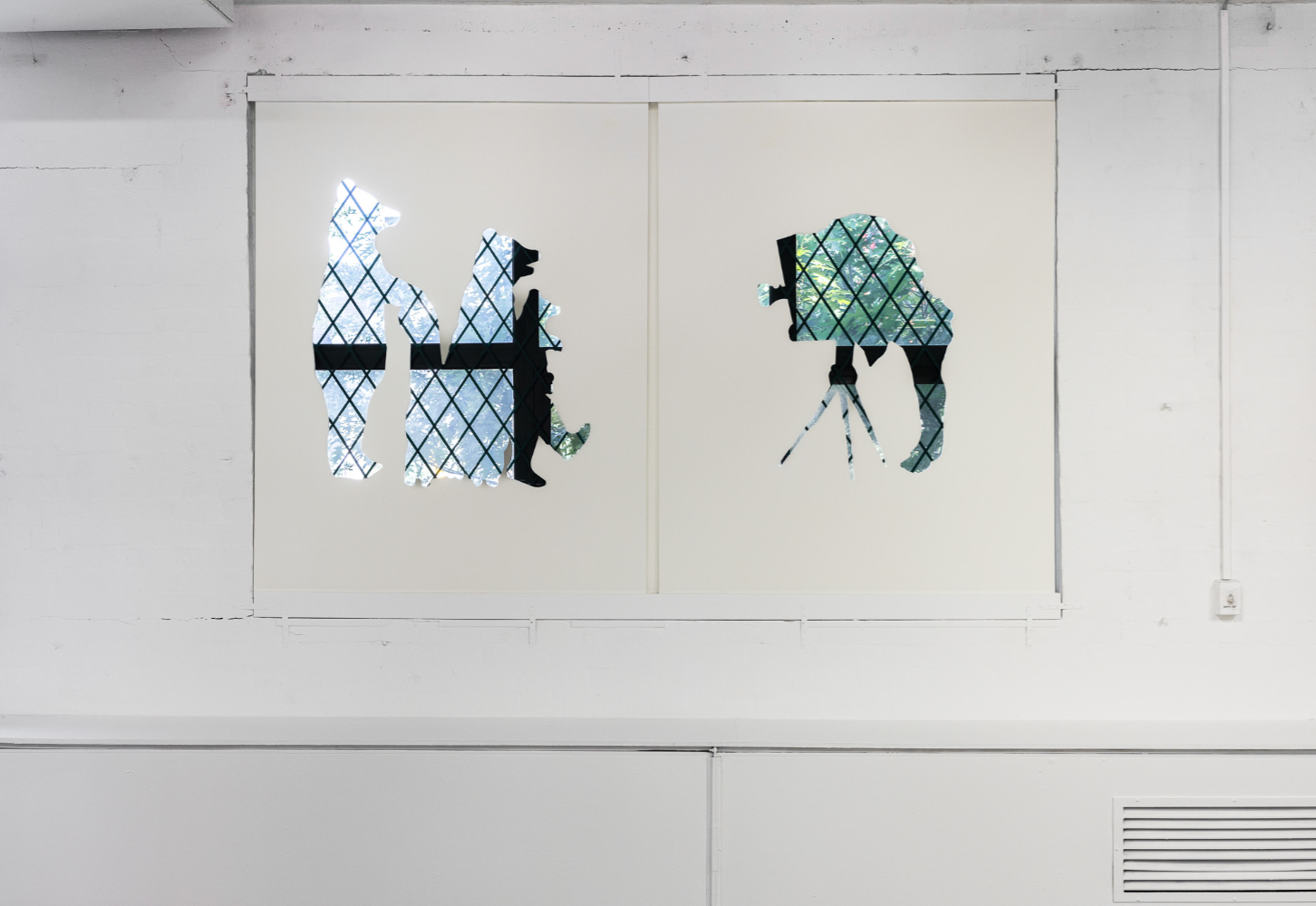
Across the way, the spectre of the Triennale looms over the VCA. Rumours of bananas duct-taped to break room walls and robotic dogs sniffing each other’s arses float through the halls of the VCA. Do landmark shows present the same facade as our grand parodied fruits: larger than life, but totally hollow? What is this utter spotlessness that haunts this year’s iteration of the grad show? What a totally manicured show! Where’s the dirt? Where are the confusingly vague soft sculptures and rotting fungal works? Instead, terms like “refreshment,” “steam room,” or “day spa” come to mind. Although it could just be the sound of water.
I wash down Ording-Jespersen’s Spekulatius with James Brett’s I’m You. An institution-proof, spherical water feature, composed of umbrellas synthesising downpour on a tin roof. Multiple umbrellas are inverted to produce and capture rain in a closed circuit. I feel a sense of relief as I notice some of the fluid splashing out of the water feature, rendering the outline of an “X” at its base. Not only does this work’s sonic component drone through the entirety of the painting department, it changes its humidity. Out of sight this drone fades into the hiss of static electricity–a quality usually reserved for the flatness of a screen. Memories are conjured, of driving to watering holes, or hearing water without being able to see it.
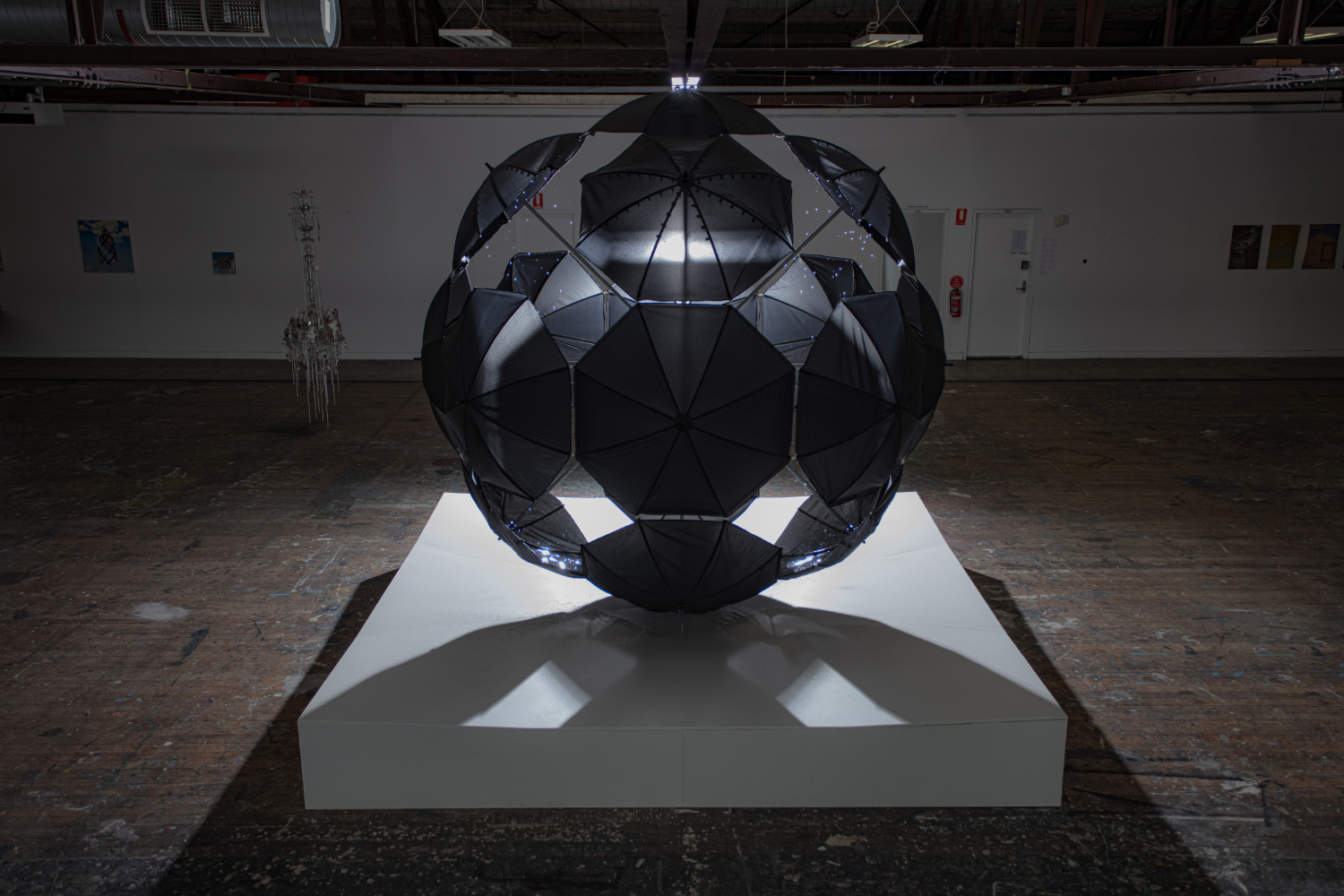
Big objects don’t usually play so nicely together. The grad show rolls around and everybody wants to make installations, I get it. Of course, big installations infer larger stakes. Too many moments to focus on makes an installation nebulous. Neither Ording-Jespersen or Brett fall into this trap. No matter how many times I drive by them, I’m still a sucker for “Big Things.”
Tarquin Charlesworth is an artist working in Naarm/Melbourne
